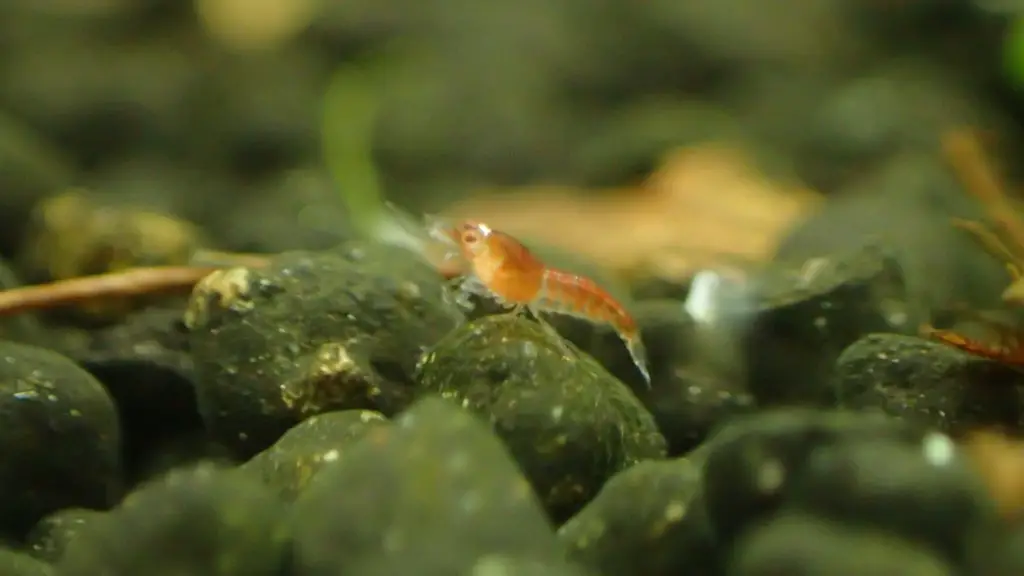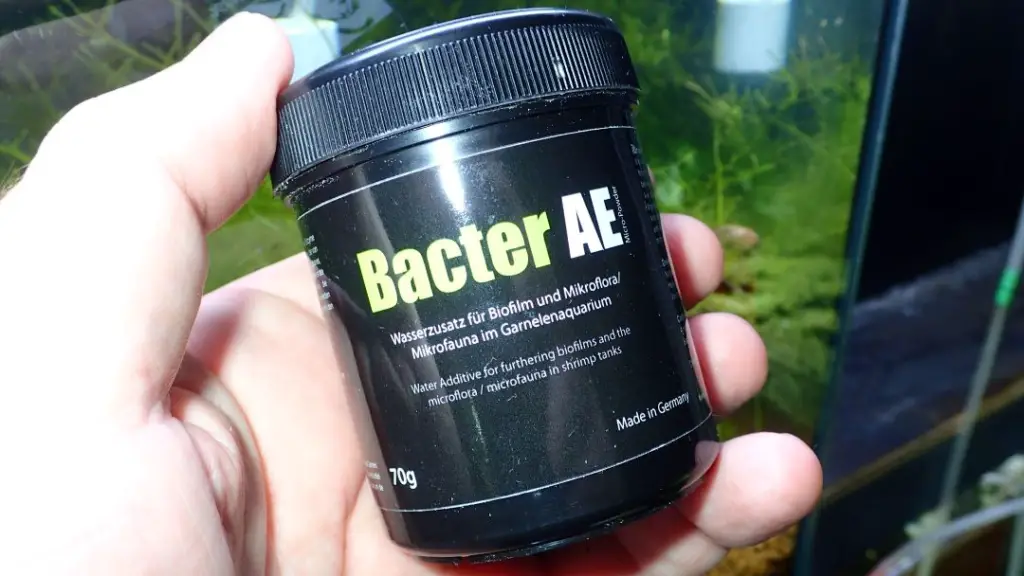Have you ever found yourself staring at your shrimp tank, wondering why your shrimp population isn’t flourishing as you’d hoped? You’ve got the water parameters just right, the tank is a shrimp paradise, but you’re not seeing as many baby shrimp as you’d like. What could be the missing piece of the puzzle?
The key to a thriving shrimp population is algae. Yes, you read that right—algae, the often misunderstood and maligned element in aquariums, is actually a shrimp’s best friend..
I’ve been a shrimp keeper for years, and I’ve faced my fair share of challenges. One of the most perplexing was figuring out how to increase the number of baby shrimp in my tanks. I tried everything from specialized shrimp foods to frequent water changes, but nothing seemed to work.
Then, I stumbled upon the importance of algae. At first, it seemed counterintuitive; after all, we’re often told that algae is the enemy. But as I delved deeper, I realized that algae is a vital part of a shrimp’s diet, making up about 70% of it.
I decided to experiment by slowing down the filtration in one of my tanks. The results were astonishing. Within weeks, I noticed a significant increase in baby shrimp.
Over the course of a year, I’ve managed to maintain a stable and thriving shrimp population across all my tanks, thanks to algae.
In this article, we’ll explore the science behind why algae is so crucial for shrimp, how it benefits the overall health of your tank, and practical tips on how to encourage algae growth. So, if you’re looking to boost your shrimp population, you’re in the right place. Keep reading!

How does algae contribute to shrimp nutrition?
Algae is more than just a green film that covers the surfaces in your aquarium; it’s a nutritional powerhouse for your shrimp. Shrimp are natural grazers, and in their native habitats, they feed primarily on biofilm and algae.
Algae is rich in essential nutrients like proteins, carbohydrates, and lipids, which are vital for shrimp growth and reproduction. It also contains a variety of minerals and vitamins that contribute to the overall health of the shrimp.
One of the most significant aspects of algae as a food source is its high protein content. Proteins are the building blocks of life, and for shrimp, they are crucial for muscle development and shell formation.
The carbohydrates found in algae provide the necessary energy for shrimp to carry out their daily activities, from foraging to molting. Lipids, or fats, although needed in smaller quantities, are essential for reproductive health, particularly in female shrimp preparing to carry eggs.
Moreover, algae are a source of phytonutrients, which have antioxidant properties. These antioxidants help shrimp combat stress and fend off diseases, making them more resilient. The minerals found in algae, such as calcium and magnesium, are vital for the formation of strong exoskeletons, which is particularly important during the molting process.
So, when you see your shrimp scraping away at that green film in your tank, remember that they are not just cleaning; they are feasting on a balanced diet that nature has perfectly designed for them. Algae serve as a self-replenishing food source that supports a shrimp’s nutritional needs across various life stages, making it an indispensable part of a thriving shrimp aquarium.

What role does algae play in maintaining tank stability?
Algae’s role in an aquarium extends beyond just being a food source for shrimp; it’s a critical component in maintaining the overall stability of the tank environment. Algae act as a natural filter, absorbing excess nutrients like nitrates and phosphates from the water.
These nutrients, if left unchecked, can lead to poor water quality, which is detrimental to the health of your shrimp and other aquatic life.
By absorbing these excess nutrients, algae help to balance the water chemistry, creating a more stable and less toxic environment for your shrimp. This is particularly important for shrimp keepers who aim to minimize water changes to keep conditions as stable as possible.
Frequent water changes can cause fluctuations in water parameters, leading to stress and potential health issues for shrimp. Algae act as a buffer against such fluctuations, providing a more consistent and reliable habitat.
Another often overlooked benefit of algae is its role in oxygen production. Through the process of photosynthesis, algae convert carbon dioxide into oxygen, enriching the water and aiding in the respiration of your shrimp and other aquatic inhabitants. This is especially beneficial in densely populated tanks where oxygen levels can quickly deplete.
Additionally, algae provide surface area for beneficial bacteria to colonize. These bacteria assist in breaking down organic waste, further contributing to water quality and tank stability. They form a symbiotic relationship with algae, each aiding the other in nutrient absorption and waste breakdown.

How can you encourage algae growth in your shrimp tank?
Encouraging algae growth in your shrimp tank is a nuanced process that requires a balance of light, nutrients, and water flow. One of the most straightforward methods to promote algae growth is by adjusting your tank’s lighting conditions.
Algae thrive in well-lit environments, so increasing the duration of light exposure can stimulate their growth. However, it’s essential to find a balance; too much light can lead to unwanted algae types that may be harmful.
Another effective way to encourage algae growth is by slowing down your tank’s filtration system. A high filtration rate can remove essential nutrients from the water, making it difficult for algae to grow. By reducing the filtration speed, you allow more nutrients to remain in the water, providing algae with the sustenance they need to flourish.
This doesn’t mean turning off your filter; rather, adjust it to a setting where it’s just enough to keep the water circulating but not so much that it strips the water of essential nutrients.
Nutrient supplementation can also be beneficial, but it’s a double-edged sword. While adding fertilizers can provide algae with the nutrients they need, overdoing it can lead to water quality issues.
A safer approach is to feed your shrimp sparingly with powdered foods like BacterAE or simple powdered goldfish flakes. These foods break down slowly, releasing nutrients over time that can be absorbed by algae.
By carefully manipulating these variables, you can create an environment conducive to algae growth, which in turn provides a stable and nutritious habitat for your shrimp. Remember, the goal is not to turn your tank into an algae-covered swamp but to encourage a healthy, balanced growth that benefits both your shrimp and the overall tank ecosystem.

What are the risks of having too much algae in a shrimp tank?
While algae serve many beneficial roles in a shrimp tank, an overabundance can lead to several issues that may compromise the health of your shrimp and the stability of the tank environment. One of the primary concerns with excessive algae growth is the potential for nutrient imbalance.
Algae consume nutrients like nitrates and phosphates, and in large quantities, they can deplete these elements to levels that are too low for other aquatic plants. This can lead to a lack of essential nutrients, causing stress and health issues for your shrimp.
Another risk associated with too much algae is reduced water clarity and quality. Excessive algae can cloud the water, making it difficult to observe your shrimp and monitor their health. This can also interfere with light penetration, affecting the growth of other aquatic plants that may be present in the tank.
In extreme cases, certain types of algae blooms can produce toxins harmful to shrimp and other aquatic life.
Oxygen levels can also be affected by an overgrowth of algae. While it’s true that algae produce oxygen during the day through photosynthesis, they consume oxygen at night. In a tank overrun with algae, this nocturnal oxygen consumption can significantly deplete oxygen levels, causing stress or even fatalities among your shrimp.

Moreover, excessive algae can clog filtration systems, reducing their efficiency and leading to poor water circulation. This can create dead zones in the tank where waste accumulates, further deteriorating water quality. It can also make tank maintenance more challenging, requiring frequent cleaning to remove the excess algae, which in turn can disrupt the stability of the tank environment.
Overgrowth of algae can be aesthetically unpleasing, covering not just the tank surfaces but also decorations, plants, and even the shrimp themselves. This can make your tank look neglected and may require labor-intensive cleaning to restore its appearance.
While algae is beneficial, an excess can lead to a range of problems, from nutrient imbalances and poor water quality to reduced oxygen levels and aesthetic issues. It’s crucial to monitor algae levels in your tank and take corrective action if you notice signs of overgrowth.
Conclusion: The Balanced Role of Algae in Shrimp Keeping
In summary, algae play a multifaceted role in shrimp keeping, serving as both a nutritional powerhouse and a stabilizing force in your tank. While it’s essential to encourage moderate algae growth for the well-being of your shrimp, it’s equally crucial to monitor and manage it to prevent potential risks associated with overgrowth.
By understanding the nuanced relationship between algae and shrimp, you can create a more stable, thriving environment for your aquatic pets.
If you have any questions or need further guidance, please don’t hesitate to reach out. If you can’t get in touch with me here, check out Aquarium Shrimp Keeping on Facebook for additional resources and community support.
Happy Shrimp Keeping!
